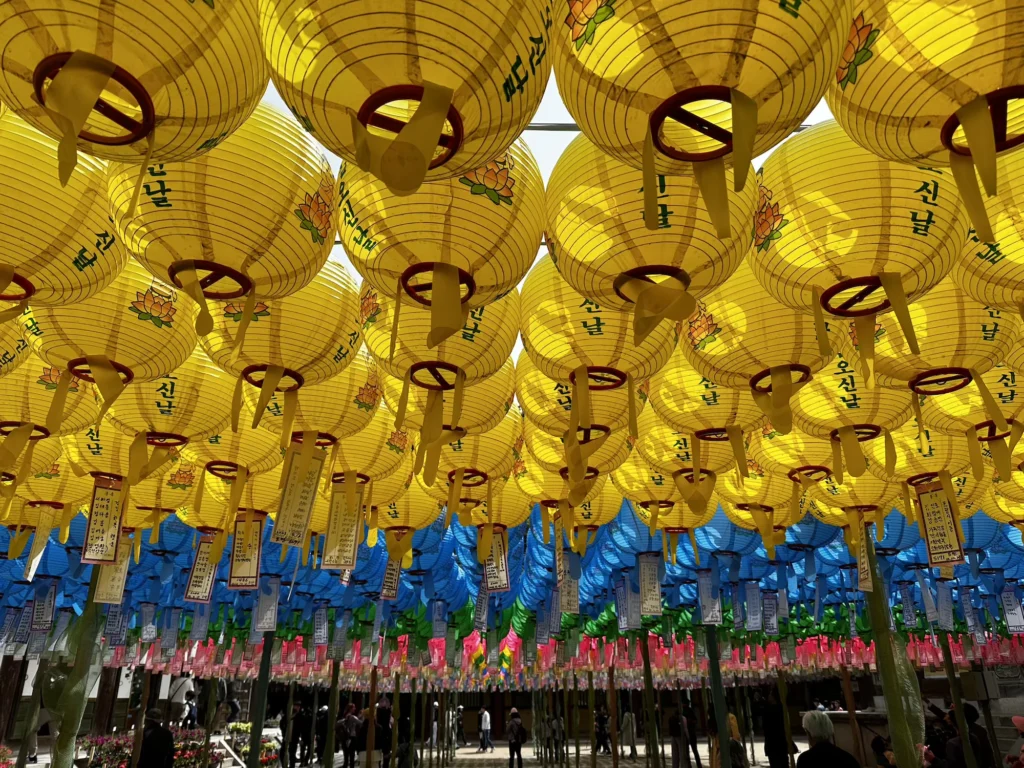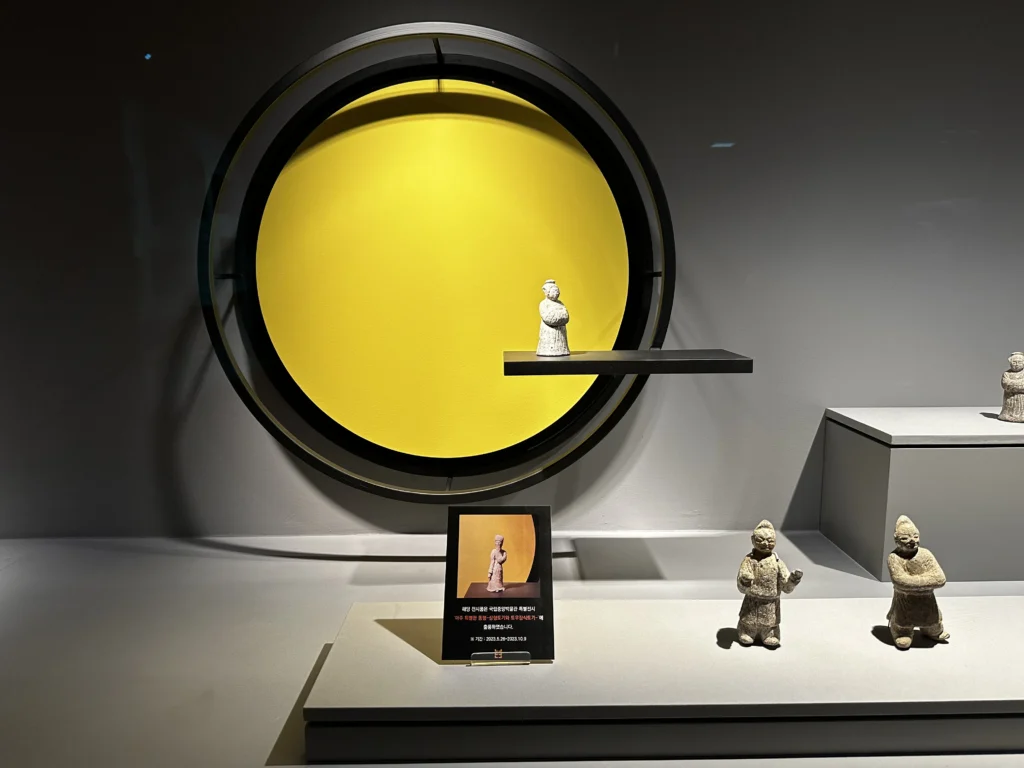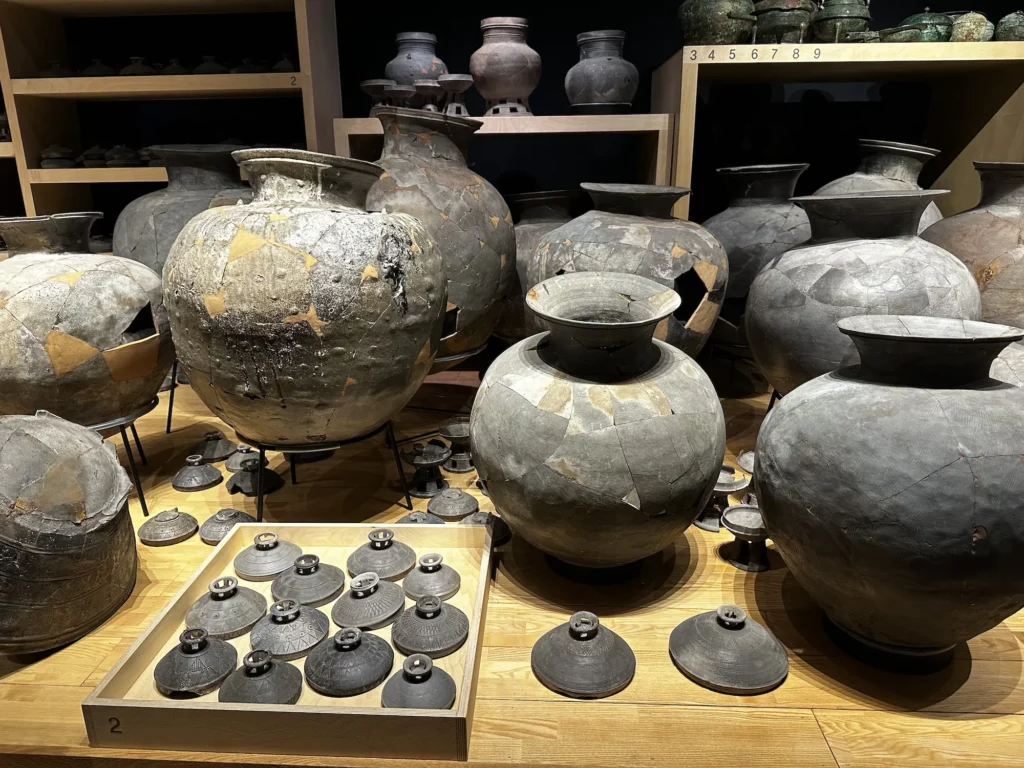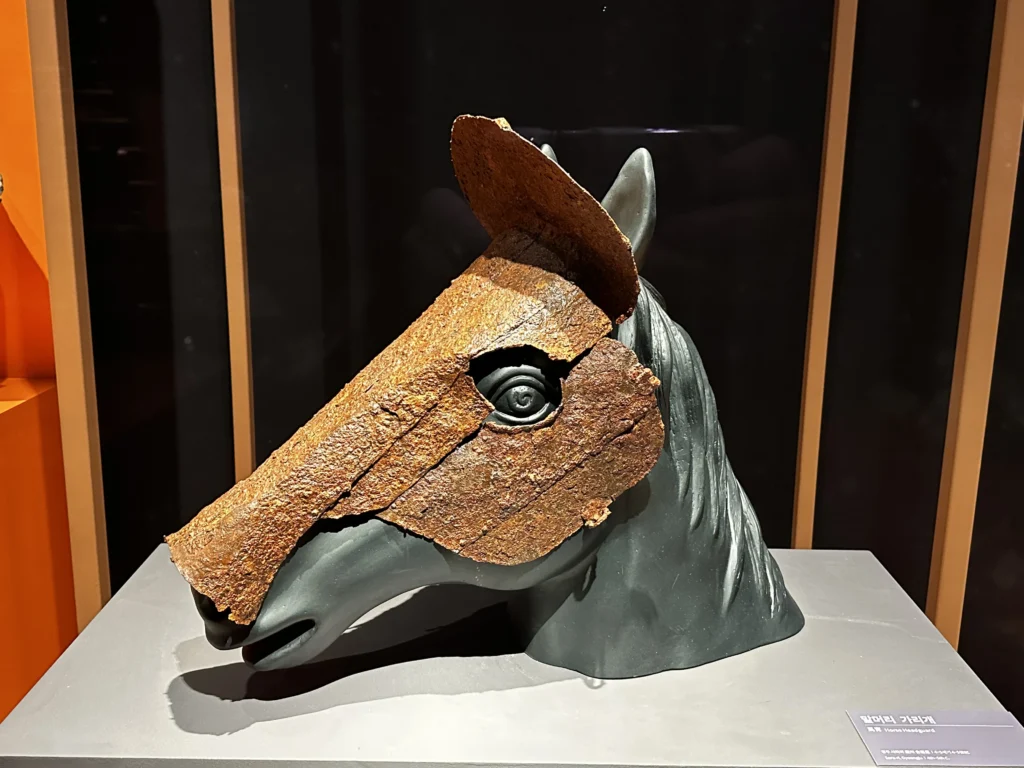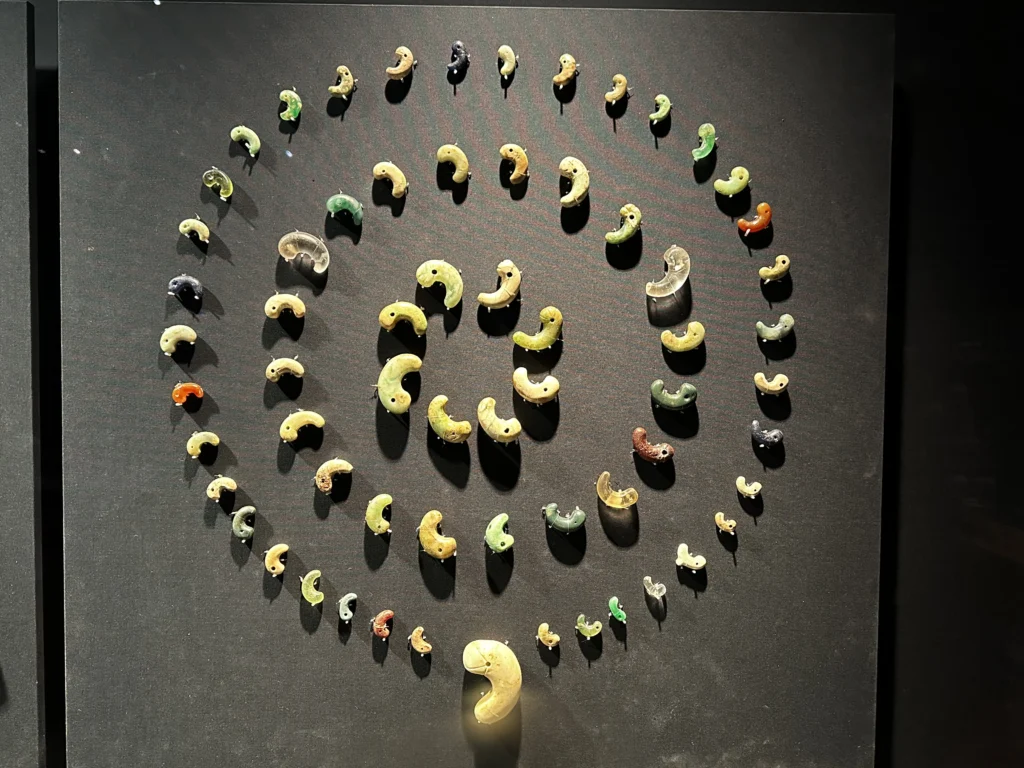Our Japan cruise aboard the Silver Muse took a detour into South Korea, docking in Busan, the country’s second-largest city and a major international port. With a skyline of modern skyscrapers and a bustling harbour, Busan, pronounced ‘Pusan’, felt like a very modern city. The port area itself was undergoing a transformation in preparation for the 2030 World Expo, with massive skyscrapers adding to the modern feel.
While many passengers opted for excursions within Busan, we took a trip to Gyeongju, an ancient capital often referred to as ‘the museum without walls.’ Honestly I think we took the wrong bus for this shore excursion as we were expecting a walk by the sea but we are so very glad we did!
Today’s shore excursion included three locations and lunch with the locals.
Busan Shore Excursion
Bulguksa Temple: A Glimpse into Korea’s Spiritual Heritage
Perched on the slopes of Mount Toham, Bulguksa Temple is a masterwork of Buddhist architecture and a UNESCO World Heritage site. We’d clearly picked a busy day as we joined the throngs of visitors walking over the stone bridges into the temple area.
Surrounded by forests, this vast temple complex dates back to 774 AD and is home to some of South Korea’s most revered treasures, including the Dabotap (Pagoda of Many Treasures) and Seokgatap pagodas.
One of the most important buildings at Bulguksa is the Daeungjeon Hall (대웅전), or Main Hall of Great Enlightenment. This is the spiritual heart of the temple, traditionally housing a statue of Shakyamuni Buddha. The structure itself is stunning, with ornately painted beams, intricate wooden lattice doors, and a sense of sacred stillness inside. I did take a picture of what was inside, but I am not sure I was supposed to!
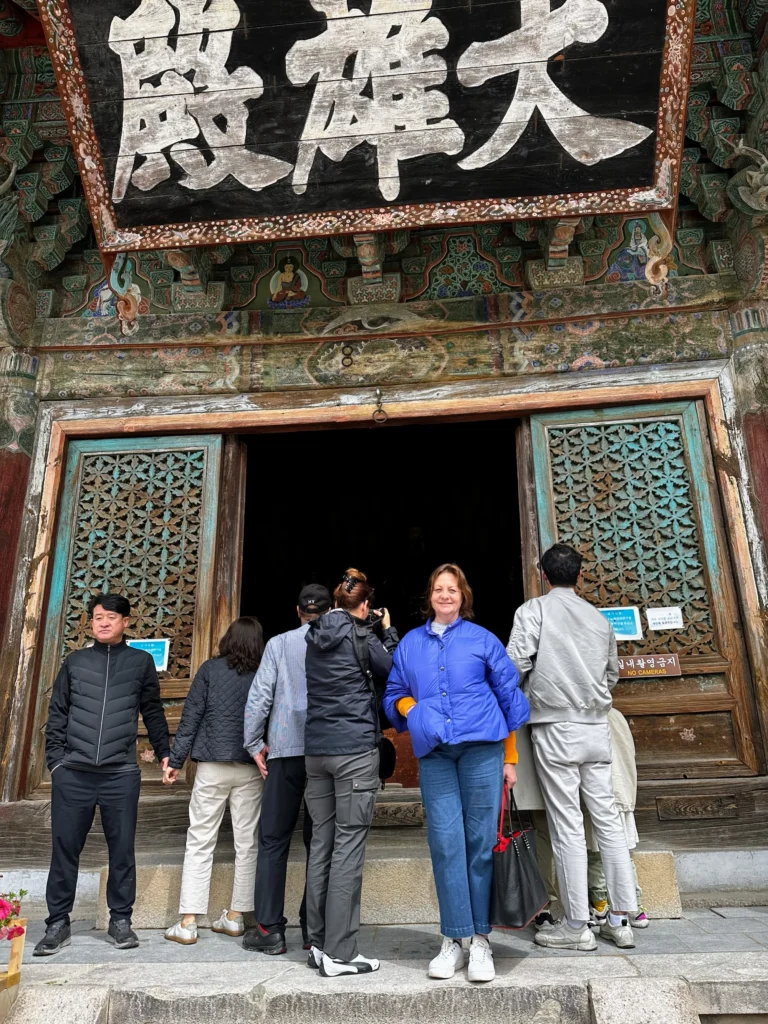
On this sunny Sunday, the temple was alive with visitors, many placing prayer lanterns in dazzling colours—red, yellow, blue, white, and pink—each representing different aspects of Buddhist tradition. The atmosphere was both festive and reflective, with monks moving quietly between halls, the scent of burning incense lingering in the air, and the occasional chime of a temple bell echoing across the courtyard. After a few days of drizzle in Kagoshima and Nagasaki, I loved the bright colours.
It is hard on these whistle stop shore excursions to really take in the importance of such a location and I have enjoyed many hours since reading up on it’s significance to Korean Buddhism. I guess the closest comparison would be a trip to Canterbury Cathedral in the UK (but more colourful!)
Just as we were heading back to the bus, we spotted the first cherry blossoms of the trip! Locals were out in force, capturing the perfect springtime photos under the delicate pink blooms. We managed to squeeze in a few shots before moving on.
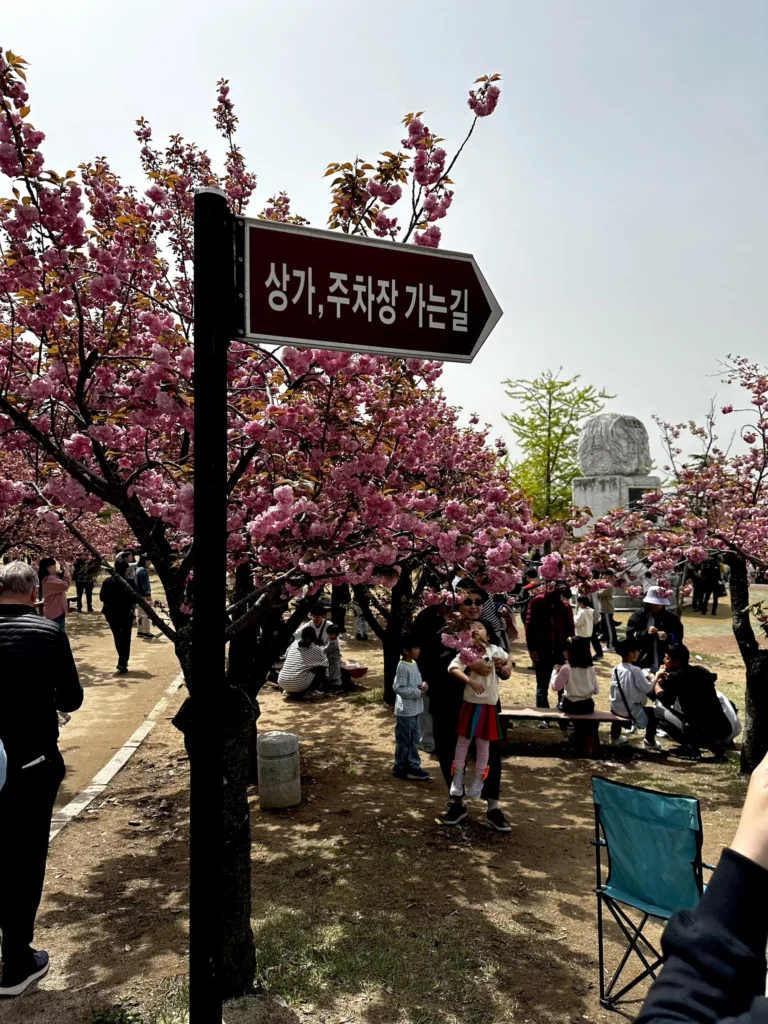
The Daereungwon Tomb Complex: Ancient Kings Beneath the Hills
From Bulguksa, we made our way to Daereungwon Tomb Complex, an unmissable site in Gyeongju, often referred to as Korea’s ‘museum without walls.’
Walking into the park, it was impressive to see the the grassy Silla dynasty burial mounds.
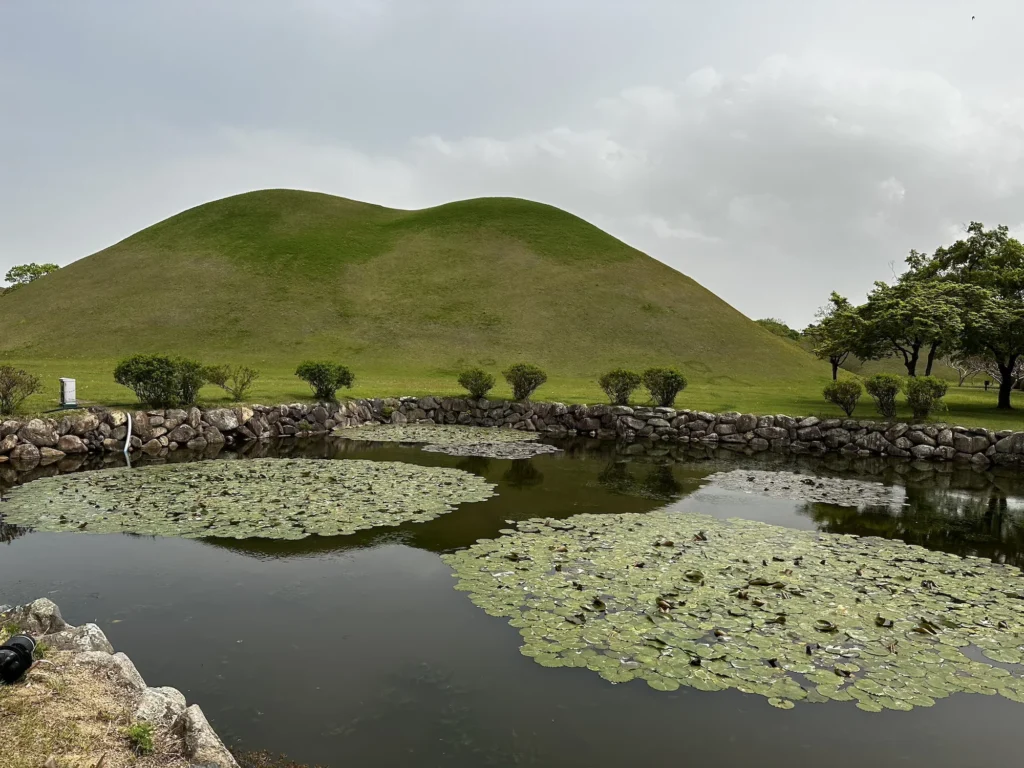
Each mound, covered in lush green grass, concealed the remains of royalty from over a thousand years ago. These weren’t vast Pyramids of Egypt but more understated, like many Silbury Hills in one beautiful park.
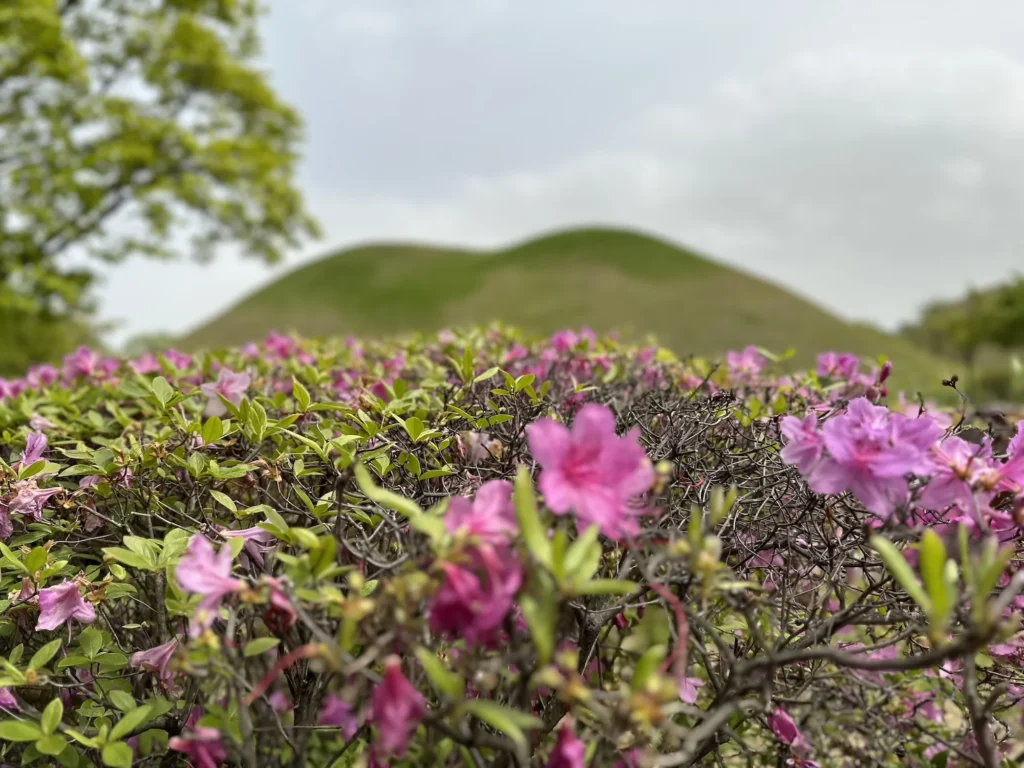
The highlight was Cheonmachong, or ‘Heavenly Horse Tomb.’ Unlike the others, this tomb has been excavated, revealing stunning artifacts—including a golden crown, intricate jewellery, and a saddle decorated with a flying horse motif. Standing in front of these artifacts, I was reminded of the grandeur and sophistication of the Silla Kingdom, which once ruled much of the Korean Peninsula.
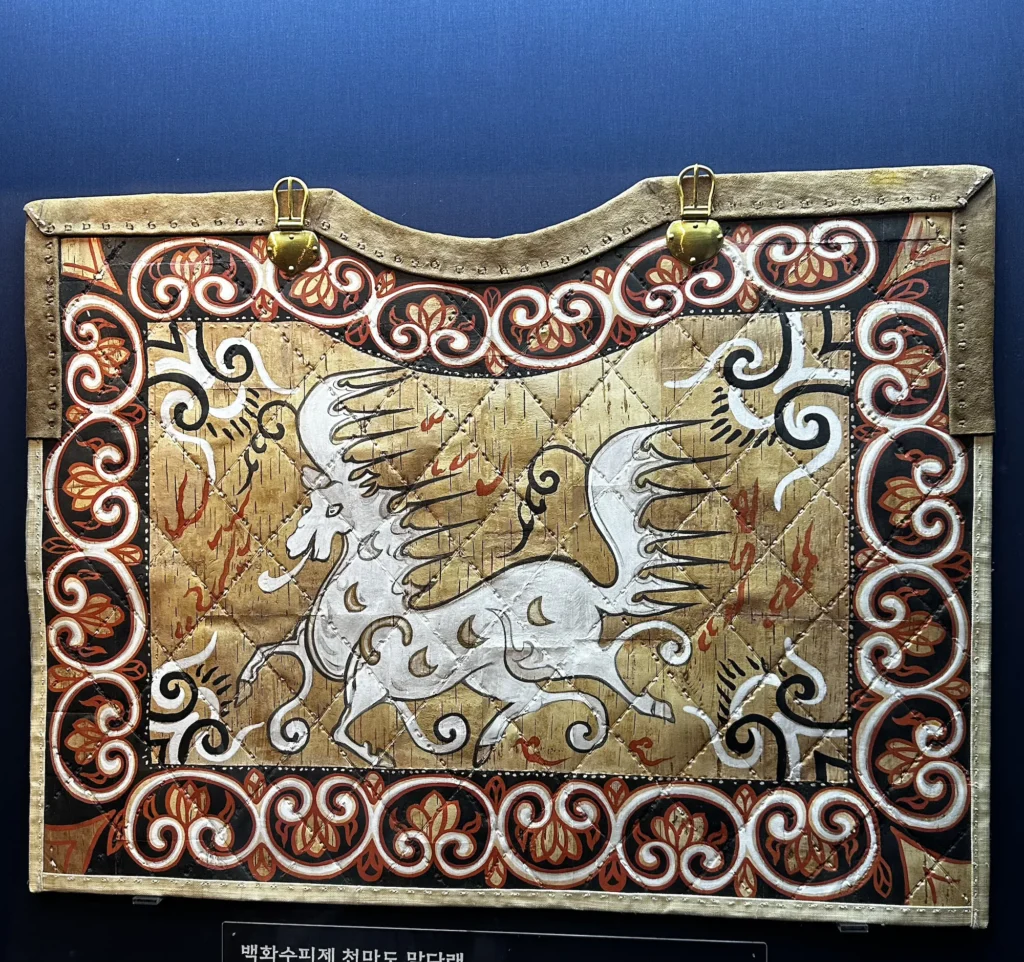
In some ways, it felt like the Korean equivalent of Egypt’s pyramids, though much greener and smaller. The park itself was just as fascinating—families dressed in their Sunday best, many in traditional hanbok, strolled through the grounds, taking photos and enjoying the afternoon. Some even let us take their picture!
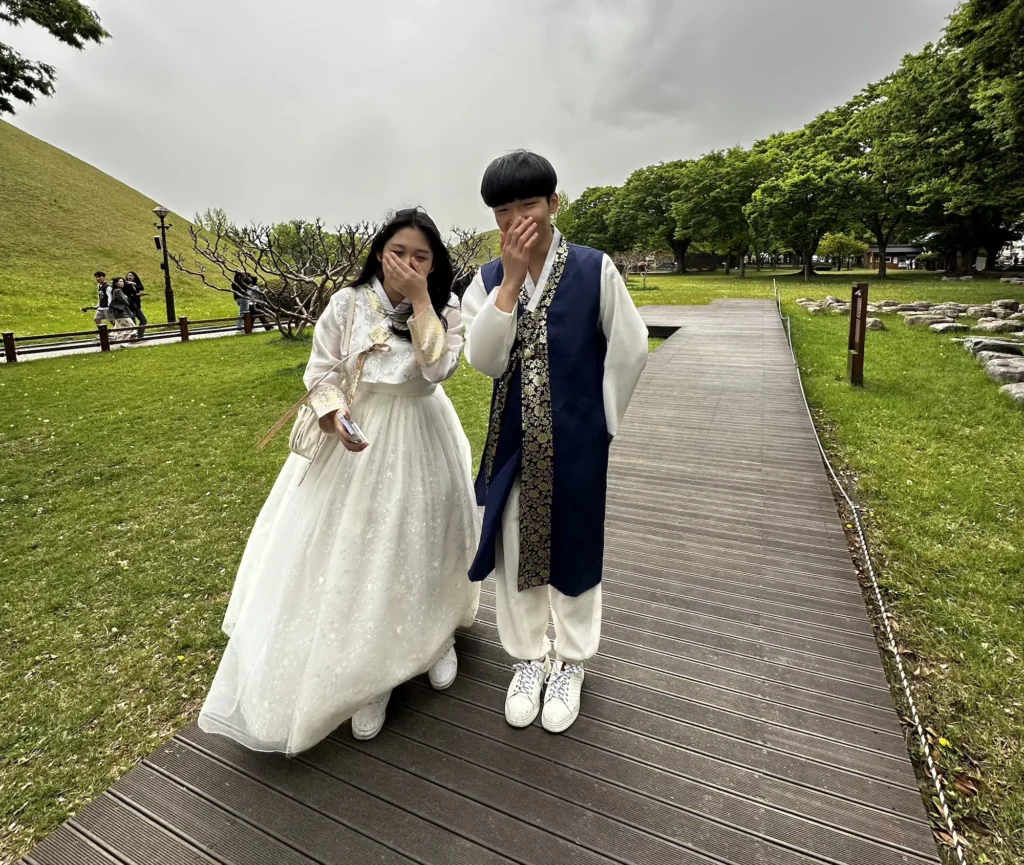
A Traditional Korean Feast at Gyodong Ssambap
After a morning of exploring, we stopped for lunch at a local favourite, Gyodong Ssambap (교동쌈밥), a bustling restaurant specialising in a traditional Korean dining style called “ssambap” (쌈밥)—literally meaning “wrapped rice.”
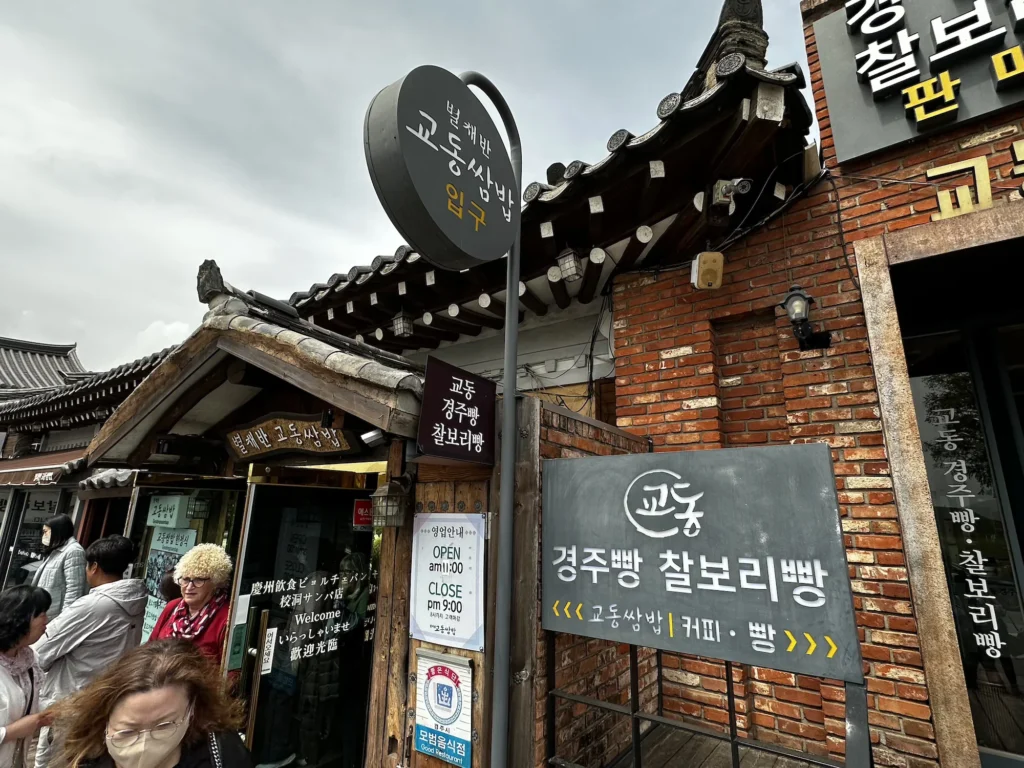
As soon as we sat down, dozens of small plates arrived at the table—kimchi, pickled vegetables, grilled meats, and sauces—all pre-prepared and ready to be wrapped in fresh leafy greens. Each dish was bursting with flavour, and it was clear that this wasn’t just a meal—it was a social experience, with families and friends chatting and sharing around us.
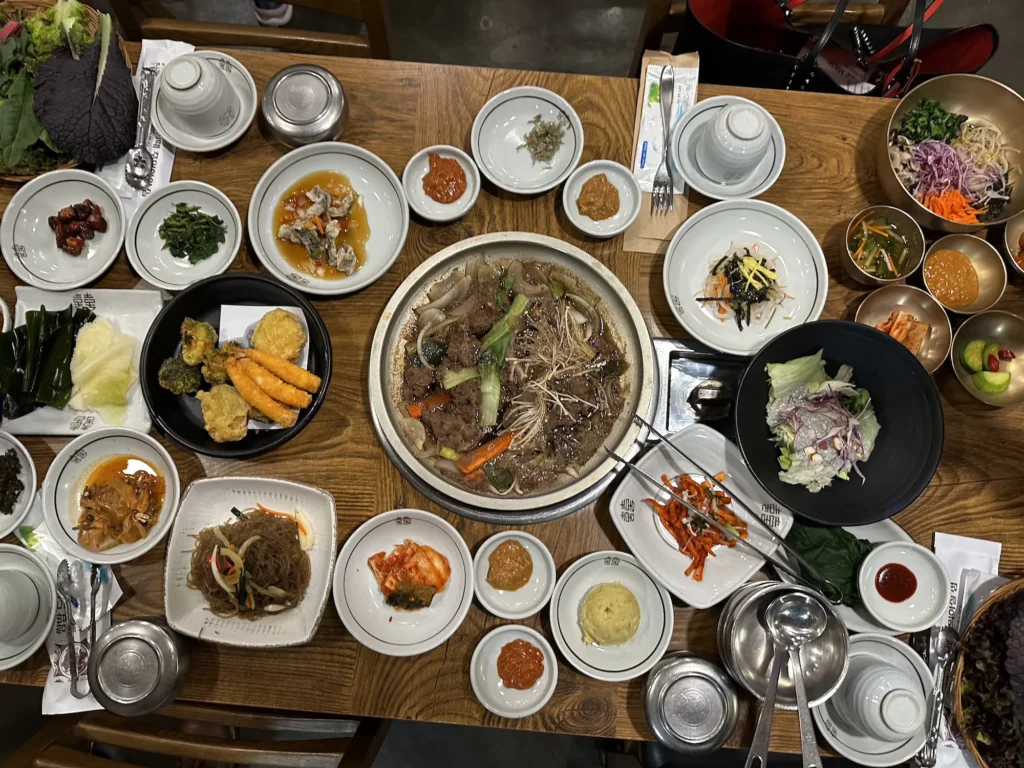
One of the standout dishes was the haemul pajeon (seafood pancake), crispy on the outside and packed with fresh seafood. It paired perfectly with makgeolli, a lightly sparkling rice wine. There’s something about eating with the locals that makes the experience feel more immersive and memorable.
The Gyeongju National Museum: A Treasure Trove of Silla Artifacts
Our final stop was the Gyeongju National Museum, home to an incredible collection of artifacts from the Silla dynasty. The museum provided a perfect conclusion to the day’s journey, connecting the dots between everything we had seen.
Among the many treasures on display were elaborate gold crowns, their delicate filigree and tree-like adornments offering a glimpse into the craftsmanship of the Silla elite, shimmering as you walked past. Nearby, royal jewellery—from long, golden earrings to ornate pendants—sparkled under the lights, each piece revealing the dynasty’s refined taste. A series of whimsical clay figurines, posed playfully against a glowing yellow moon, added a touch of personality to the ancient past. Together, these artefacts told a vivid story of a kingdom where artistry, power, and spirituality were deeply intertwined.
Outside, the most striking exhibit was the Emille Bell ((에밀레종), an enormous bronze bell cast in 771 AD, said to produce one of the most beautiful chimes in the world. According to legend, early attempts to cast the bell failed until a child was sacrificed and cast into the molten metal. When the bell was finally completed, it rang with an eerie, sorrowful chime—”Emile, Emile,” the Korean word for mother, as if the child’s spirit still lingered within.
For centuries, this legend persisted, but in 1999, an analysis of the bell’s composition revealed no traces of phosphorus, meaning no human remains were in the metal. Today, the bell no longer rings, but a recording of its deep, solemn chime plays in the museum every hour. Hearing it was a haunting but fitting end to the visit
As we the clouds gathered we could hear rumbles of thunder which marked our time to head back to the Silver Muse.
Like many of our shore excursions we had crammed a lot in that would take weeks to unpack and share. I am delighted we saw so many things that we’d never normally know about, or choose to see. Experiencing Korea’s history—through its temples, tombs, and traditions, and most importantly, through the people is a memory I will cherish.
Our final experience was standing on our balcony as we departed for Kanazawa , watching the modern skyscrapers of Busan come to life.



